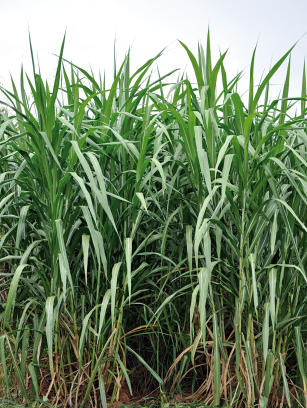Genetic breeding of elephantgrass for forage use
Genetic breeding of elephantgrass for forage use

Photo: La Falce, Marcos
In Brazil, milk production is practiced by more than one million farmers, mostly smallholders, who rely primarily on pastures and grass plantations for green chop as the most important feeding sources for their herds. One of the main demands of the farmers refers to improved forage cultivars for cutting and grazing that can meet the nutritional needs of herds throughout the year. Elephantgrass stands out as a potential fodder resource due to its high production of biomass, superior nutritional quality and good acceptance by the animals. It can be used as pasture, grazing, hay or silage, and is among the most used forage for intensification of dairy and beef production systems, in the different Brazilian regions and biomes. The objective of this project is to develop elephantgrass cultivars for forage use that show high yields of good quality dry matter, resistance and / or tolerance to biotic and abiotic stresses, and adaptation to the different edaphic and climatic conditions of Brazil. The methodology of the project is divided into four stages, as follows: I - Obtaining new genotypes through population improvement, self-fertilization and crossing; II - Evaluation of new genotypes; III - Obtaining information / products to aid genetic improvement procedures; and IV – Releasing new cultivars. At the end of the project, it will be possible to release a new seed-propagated elephantgrass cultivar and the implementation of VCU (Value for Cultivation and Use). Additionally, the best genotypes will be selected considering forage yield and quality, and tolerance to biotic and abiotic stresses. Obtaining new elephantgrass cultivars for forage use will promote greater safety and efficiency in animal production systems, contributing to solve both the problem of nutritional deficiency in times of lesser feed availability and the demand of intensive animal production systems for more productive and of better quality cultivars. This will result in higher income for the farmers by increasing the quantity and quality of milk and beef produced.
Status: Completed Start date: Sat Jul 01 00:00:00 GMT-03:00 2017 Conclusion date: Wed Jun 30 00:00:00 GMT-03:00 2021
Head Unit: Embrapa Dairy Cattle
Project leader: Francisco Jose da Silva Ledo
Contact: francisco.ledo@embrapa.br
